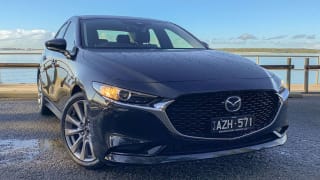
Mazda 3 sedan 2019 review: G25 Evolve
Mazda persists with a sedan version of it Mazda3 small car. It looks different and represents a small fraction of sales. But do its pros outweigh any cons?
Browse over 9,000 car reviews

Generally, I consider myself spoilt rotten, but there are few cars with which I am as intimately acquainted as the 10th generation Honda Civic. I don't own one, but I have driven at least two of them every year since its arrival - including the delightful Type R - and have been able to feel it evolve ever so slightly with each drive.
Honda's engineers are hard-working folk and I always had the impression that each Civic was better than the last. Hatch or sedan, basic spec or top of the range, the Civic is a roomy, refined sedan (or hatchback) with a CVT I don't hate, which is really saying something.
Thing is, there are lots of those around now and you can't stand still anymore. This is the third year on sale for this latest version of Honda's mainstay and it's a constant battle to stay on top of its rivals, old and new.
| Honda Civic 2020: VTi-L | |
|---|---|
| Safety rating | |
| Engine Type | 1.5L turbo |
| Fuel Type | Regular Unleaded Petrol |
| Fuel Efficiency | 6L/100km |
| Seating | 5 seats |
| Price from | $23,760 |
The VTi-L is the third car in the range and the first to ditch the 1.8-litre for the 1.5-litre turbo.
For $27,990 ($200 more than the hatch) this Civic arrives from Thailand with 17-inch alloys, an eight-speaker stereo, dual-zone climate control, reversing camera, LaneWatch side camera, keyless entry and start, front and rear parking sensors, cruise control, auto headlights and wipers, leather steering wheel, power mirrors and windows and a space-saver spare.
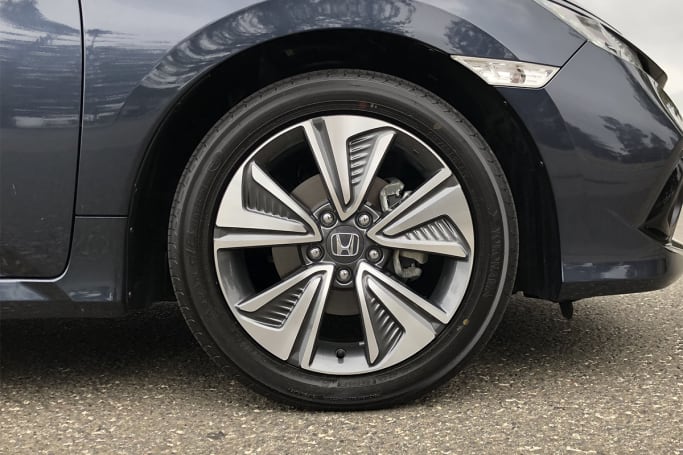
The stereo is run from a matte-finish 7.0-inch touchscreen with fairly ho-hum software.
Plug in your iPhone or Android device, though, and you get the relevant mirroring software, and that means you can fill the gap left by the omission of sat nav.
The Civic is looking as sharp as ever from most angles and as awkward as always from others.
I think there's still way too much going on front and rear and you have to be right down low on the ground to appreciate it from most angles.
It's a bit of a journey from front to rear because it's quite busy and a little overblown at either end, but the profile is calm and clear. Although the wheels do look too small.
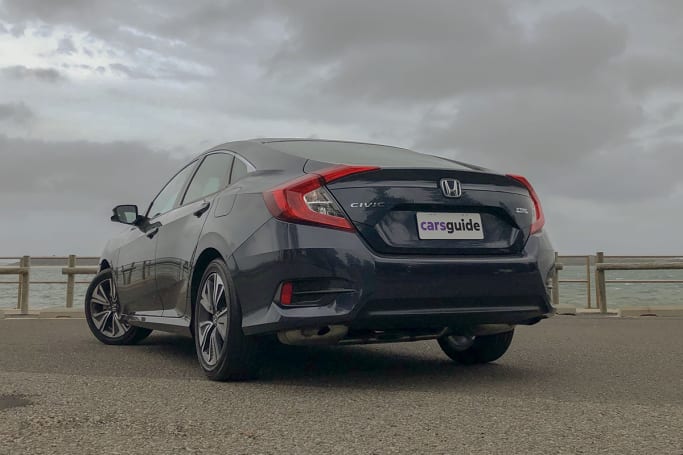
Inside the look is clever and much more self-assured. While it's a bit grey, it all fits together, looks mostly good (I still don't like the shapes in the instrument pack) and is very clever, making the most of the interior space and bringing some new ideas to the table.
As a plus, the interiors always looks pretty much the same across the range, so you're not missing out in the cheap seats.
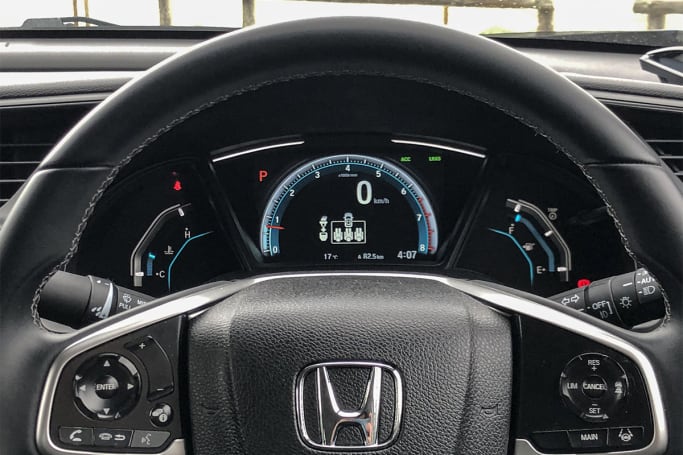
I am never anything less than surprised by the vast amount of space in the Civic's cabin. It's comfortable, too, which isn't always a given in a Honda; the company is fond of over-stuffed front seats.
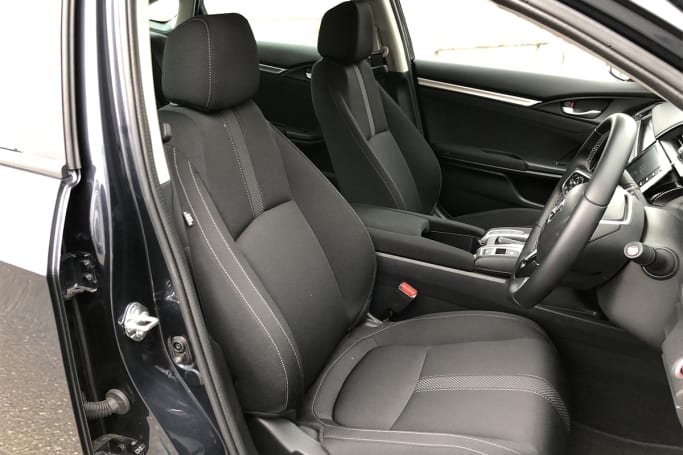
These ones seem different to last year's, so there's hope.
Rear seat passengers are in for a treat in the Civic - like it's Korean rival, the Elantra, there is loads of rear-seat space that many Japanese competitors could only dream of offering.
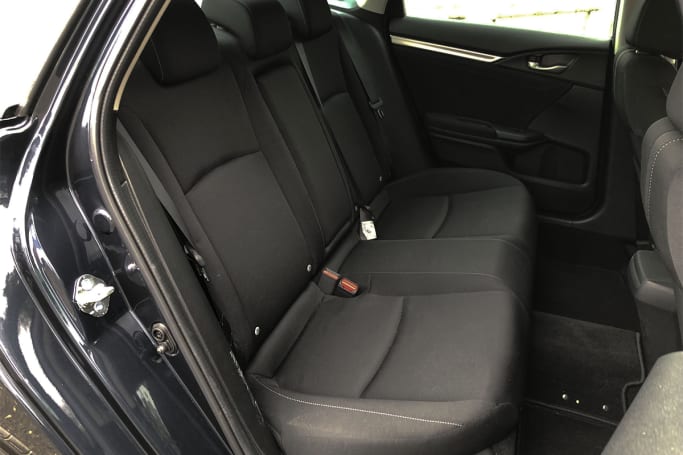
Headroom is slightly compromised, as the roof dips to meet the fast rear glass, but you'd have to be fairly tall to be bothered.
There are four cupholders and bottle holders and a massive central bin between the front seats, big enough to conceal a small animal.
The boot holds an impressive 519 litres with the seats in place. Honda doesn't supply a total figure with the seats down, but the aperture is a tad narrow, so don't get too ambitious with wide loads.
Honda's 1.5-litre turbo makes its first appearance in the range in the VTi-L, replacing the 1.8-litre of the VTi and VTi-S. It is absolutely worth the extra money for 127kW and 220Nm.
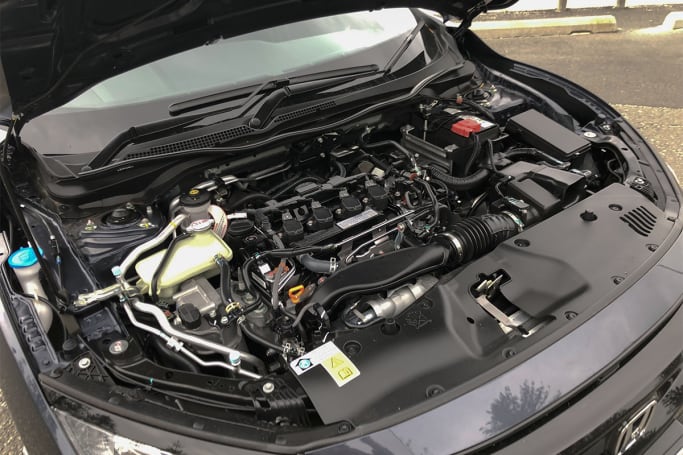
Honda's reasonably bold claim of 6.0L/100km isn't too far off the mark. A week in our hands delivered 8.2L/100km in mostly suburban driving. That's not a bad effort, especially considering it drinks 91 RON fuel rather than the premium demanded by most turbo engines.
One slightly annoying factor, however, is the relatively small 47-litre fuel tank, which somewhat blunts the range.
The Civic has six airbags, ABS, stability and traction controls and a reversing camera. It also has LaneWatch, which is a camera stuck to the bottom of the left-hand wing mirror.
When you activate the left indicator, the central screen lights up with a view down that side of the car to spot ambitious cyclists or equally ambitious cars or pedestrians.
It also has forward AEB (low and high speed), forward collision warning, auto high beam, lane-departure warning and lane-keep assist.
This package, known as Honda Sensing, almost brings it into line with the Mazda3, but is missing rear AEB and rear cross-traffic alert.
Basic Warranty
5 years / unlimited km warranty
ANCAP Safety Rating

Hondas offers a five-year/unlimited-kilometre warranty, which puts the Civic there or thereabouts, beaten only by Kia's seven-year deal.
The Tailored Servicing program caps nine of the first 10 services at $297, with just one service jumping to $328. That sounds pretty good, except you have to visit your dealer every 12 months (fine) or 10,000km (say what now?). Nobody else has such a short distance between services.
The extra items listed on the website, like various filters, range from reasonable right up to a shocking $213 for a fuel filter and $209 for spark plugs.
Over the years I have warmed to the Civic as running changes have improved the car. The first one I drove was a bit noisy and on surfaces with big joins, like concrete, the ride got out of shape and was a bit messy.
Things have improved. The noise seems much better damped and so conversation flows a lot more freely in the cabin.
This Civic also shrugged off the same road that upset the ride in that first drive, leaving me with the impression that it's a much more supple machine than at its launch.
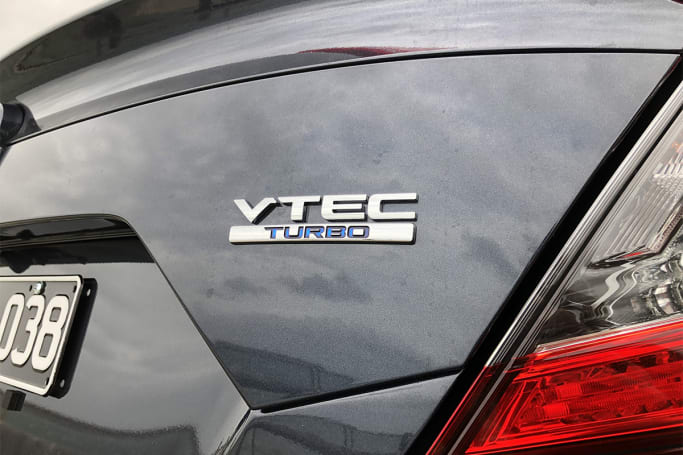
What has also hugely improved is the drivetrain. The CVT is wound up a bit tighter and programmed to behave a bit more like a normal automatic.
That means it's less rubber-bandy and it barely flares at all when you lift off after hard acceleration. It also makes the car more responsive under any level of throttle application, which means it's a bit more relaxing.
The extra boost of power and torque also contribute to a more relaxed feel - the 1.8 is a bit breathless and needs more planning for overtaking and launching into traffic whereas the torquier 1.5 means you can surf along with less drama. It's not hugely quicker, but it is easier to live with.
The older the Civic grows, the better it gets. The only problem is, its rivals keep adding signifcantly to their offerings (or cutting their prices), particuarly in the area of safety.
The Civic's seemingly slow and steady improvements in refinement certainly keep it in the mix. It's a compelling proposition, though - nice to drive, reasonably cheap to own and run and has the space you would never dream of finding in a small car.
| Vehicle | Specs | Price* | |
|---|---|---|---|
| VTi | 1.8L, ULP, CVT AUTO | $18,590 – 23,540 | 2020 Honda Civic 2020 VTi Pricing and Specs |
| VTi | 1.8L, ULP, CVT AUTO | No recent listings | 2020 Honda Civic 2020 VTi Pricing and Specs |
| 50 Years Edition | 1.8L, ULP, CVT AUTO | $20,020 – 25,300 | 2020 Honda Civic 2020 50 Years Edition Pricing and Specs |
| 50 Years Edition | 1.8L, ULP, CVT AUTO | $20,020 – 25,300 | 2020 Honda Civic 2020 50 Years Edition Pricing and Specs |
| Price and features | 8 |
|---|---|
| Design | 7 |
| Practicality | 9 |
| Under the bonnet | 7 |
| Efficiency | 7 |
| Safety | 7 |
| Ownership | 7 |
| Driving | 7 |
$22,990
Lowest price, based on 68 car listings in the last 6 months